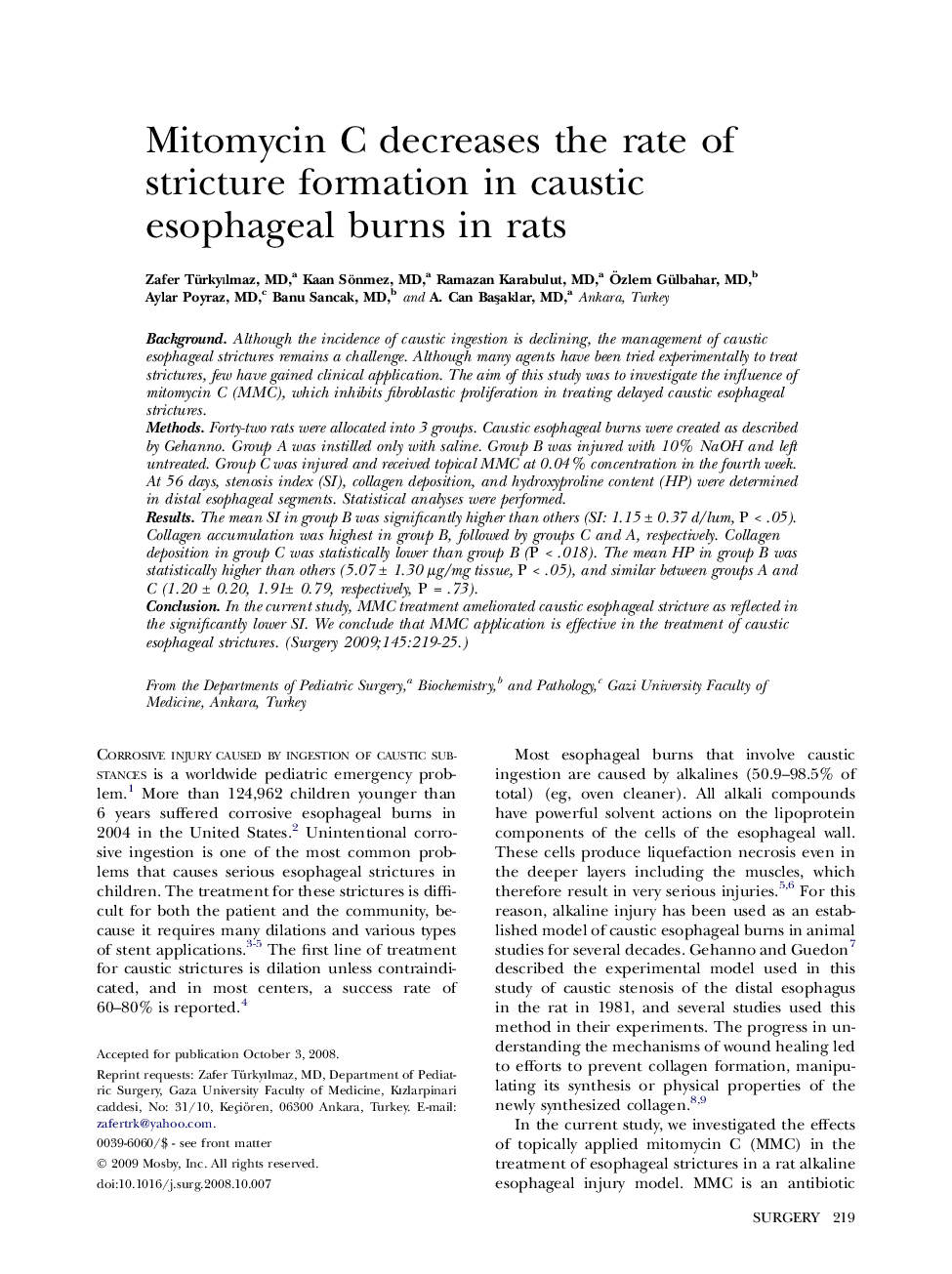| Article ID | Journal | Published Year | Pages | File Type |
|---|---|---|---|---|
| 4309146 | Surgery | 2009 | 7 Pages |
BackgroundAlthough the incidence of caustic ingestion is declining, the management of caustic esophageal strictures remains a challenge. Although many agents have been tried experimentally to treat strictures, few have gained clinical application. The aim of this study was to investigate the influence of mitomycin C (MMC), which inhibits fibroblastic proliferation in treating delayed caustic esophageal strictures.MethodsForty-two rats were allocated into 3 groups. Caustic esophageal burns were created as described by Gehanno. Group A was instilled only with saline. Group B was injured with 10% NaOH and left untreated. Group C was injured and received topical MMC at 0.04% concentration in the fourth week. At 56 days, stenosis index (SI), collagen deposition, and hydroxyproline content (HP) were determined in distal esophageal segments. Statistical analyses were performed.ResultsThe mean SI in group B was significantly higher than others (SI: 1.15 ± 0.37 d/lum, P < .05). Collagen accumulation was highest in group B, followed by groups C and A, respectively. Collagen deposition in group C was statistically lower than group B (P < .018). The mean HP in group B was statistically higher than others (5.07 ± 1.30 μg/mg tissue, P < .05), and similar between groups A and C (1.20 ± 0.20, 1.91± 0.79, respectively, P = .73).ConclusionIn the current study, MMC treatment ameliorated caustic esophageal stricture as reflected in the significantly lower SI. We conclude that MMC application is effective in the treatment of caustic esophageal strictures.
